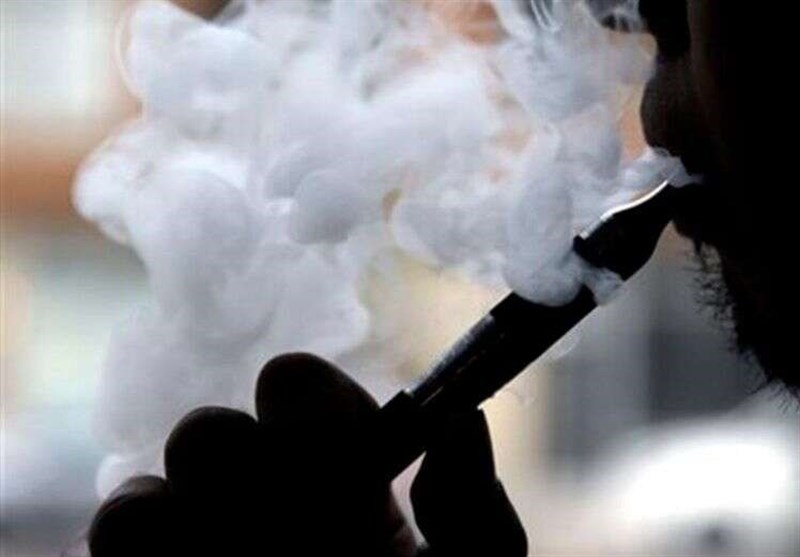Nearly 100 Cases of Lung Illnesses Linked to E-Cigarette Use
TEHRAN (Tasnim) – The US Center for Disease Control and Prevention (CDC) is investigating a “cluster” of lung illnesses that it believes may be linked to e-cigarette use after such cases were reported in 14 states.
A large number of those stricken ill have been hospitalized, with some in intensive care and on ventilators.
At least 31 cases have been confirmed as of Friday, state officials said, and dozens more are under investigation. Medical authorities say it is unclear whether patients will fully recover, ScienceAlert reported.
Officials are warning clinicians and the public to be on alert for what they describe as a severe and potentially dangerous lung injury. Symptoms include difficulty breathing, shortness of breath or chest pain before hospitalization.
Health officials said patients have also reported fever, cough, vomiting and diarrhea.
The Centers for Disease Control and Prevention said Friday that officials are working with health departments in at least five states with confirmed cases - California, Illinois, Indiana, Minnesota and Wisconsin - to determine the cause of the condition after "a cluster of pulmonary illnesses linked to e-cigarette use" was reported among adolescents and young adults in recent weeks.
In a call Friday with state health authorities, CDC officials said they were probing 94 possible cases in 14 states.
To date, there is no consistent evidence that an infectious disease is the culprit, CDC spokeswoman Kathy Harben said. While some of the cases appear similar, officials said they don't know whether the illnesses are associated with the e-cigarette devices themselves, or with specific ingredients or contaminants inhaled through them.
Health officials have said patients have described vaping a variety of substances, including nicotine, marijuana-based products and do-it-yourself "home brews".
Underscoring growing concern, CDC officials say they are notifying health-care systems and clinicians across the country about the illnesses and what to watch for. State health departments have also issued warnings.
E-cigarettes have grown in popularity over the past decade despite little research on their long-term effects. In recent years, health authorities have warned of an epidemic of vaping by underage teenagers.
The leading brand, Juul, said it is monitoring the reports of illnesses and has "robust safety monitoring systems in place".
Gregory Conley, president of the American Vaping Association, a group that advocates vaping products, said that each month, about 10 million adults vape nicotine without major issues.
"It appears much more likely that the products causing lung damage are amateur-made street vapes containing THC or illegal drugs, not nicotine," he argued.
But health authorities are not at all sure that is correct.
"We haven't had that kind of history with vaping to be able to assure anyone - teens included - that this is a safe practice," said Emily Chapman, chief medical officer at Children's Minnesota, a health system headquartered in Minneapolis, which has cared for four teens, ages 16 to 18, with lung illnesses.
In the past month, the teenagers presented symptoms that appeared manageable and consistent with viral-type infections or bacterial pneumonia - shortness of breath, coughing, fever and abdominal discomfort, Chapman said.
But they continued to deteriorate despite appropriate treatment, including with antibiotics and oxygen support. Some suffered respiratory failure and had to be put on ventilators, she said.
Chapman said physicians eventually made the connection to vaping-associated acute lung injury. When the patients were treated with steroids, among other therapies, they showed improvement.
Clinicians don't know whether the patients will suffer long-term consequences, she said.
"These cases are extremely complex to diagnose, as symptoms can mimic a common infection yet can lead to severe complications and extended hospitalization," Chapman said.
"Medical attention is essential. Respiratory conditions can continue to decline without proper treatment."
E-cigarettes are a diverse group of products containing a heating element that produces an aerosol from a liquid that users can inhale via a mouthpiece. Millions of Americans use e-cigarettes, with the greatest use among young adults.
In 2018, more than 3.6 million US middle and high school students said they had used e-cigarettes in the past 30 days, according to the CDC.
A National Academies of Sciences, Engineering and Medicine report in January 2018 found that while evidence suggests that e-cigarettes are likely to be less harmful than conventional cigarettes, which produce a raft of toxic substances when burned, they still pose health risks.
Among nonsmoking adolescents and young adults, the report said, "their adverse effects clearly warrant concern".
Such effects include "moderate evidence for increased cough and wheeze" and increased incidence of asthma attacks.
But many medical authorities believe there still isn't sufficient data to know their full effects, especially on young people.
Dylan Nelson, of Burlington, Wisconsin, who has asthma and has been vaping for about a year, was hospitalized with pneumonia last month after he started having trouble breathing.
The 26-year-old described feeling as if he were breathing through a straw. He said he was coughing, his heart was racing, and his breathing was hard and fast.
Nelson said he spent days in the hospital, some of that time attached to a ventilator. His mother, Kim Barnes, said when a nurse told her it might be related to vaping, it was a wake-up call for her.
Now, she wants to convey that urgency to other parents: "You need to sit your kids down and tell them the dangers of this stuff. If you're an adult, wise up - this is not good. Look into it before you decide to pick this stuff up and start using this."
Including Nelson, Wisconsin had 15 confirmed cases as of Thursday, and another 15 under investigation, the health department said. All were hospitalized. The first cases were among teens and young adults, but newer ones include patients in older age groups, officials said.
All the patients reported vaping in the weeks and months before being hospitalized, but officials said they do not know the names and types of products used.
New York's health department said Friday it is actively investigating 11 reported cases of pulmonary disease in people using vape products; it has issued a statewide advisory to health-care providers. Patients ranged in age from 18 to 49, and many reported the use of cannabis-containing products, the advisory said.
Minnesota's health department, meanwhile, urged providers to be on alert "for vaping as a cause for unexplained breathing problems and lung injury and disease." It is asking clinicians to look for similar cases and report them.
"There are still many unanswered questions," said Ruth Lynfield, Minnesota state epidemiologist and the health department's medical director. "But the health harms emerging from the current epidemic of youth vaping in Minnesota continue to increase."
Doctors had seen "scattered cases" of lung illnesses tied to vaping before, but they had not identified a pattern until now, said Chapman, of Children's Minnesota.
"I think it's important to understand that vaping is assumed to be safe, and yet we know so little about it," she said.






